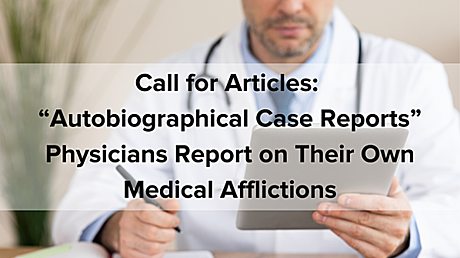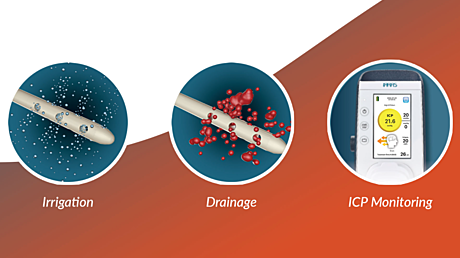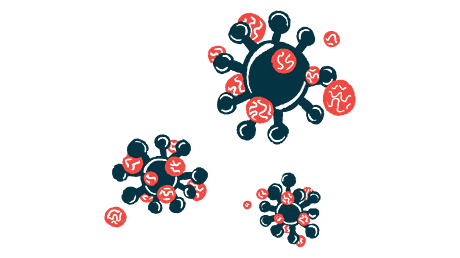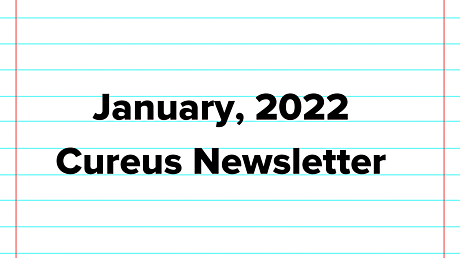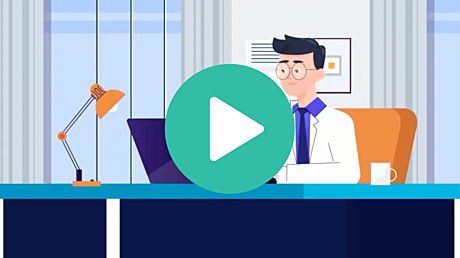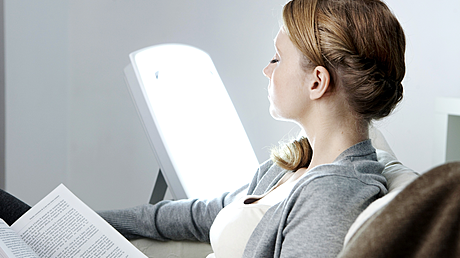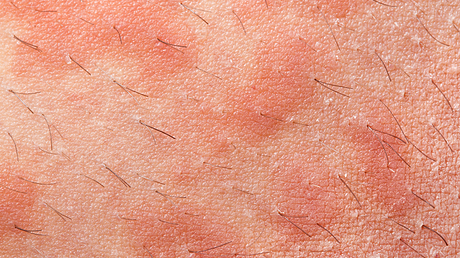Newsroom
Cureus May 2022 Newsletter
Hi, With published articles from over 140 countries, Cureus is leading the way as the most inclusive and affordable Open Access medical research journal. We represent a new generation of medical professionals who value efficiency and open dialogue. Cureus understands the need for both big and small science, and that is why we are one of the few journals accepting and publishing case reports. Whether you’re here to publish, peer review, or read the latest medical research, we’re glad you’re part of our community.
May 17, 2022
Submit Your "Autobiographical Case Report"
Submit your "autobiographical case report." *Now accepting submissions indefinitely. Physicians bring a unique perspective to the understanding of any disease and are often poised to provide lifelong outcomes for chronic diseases and/or their treatments. Many doctors are sitting on a treasure trove of medical knowledge learned firsthand through life experience - insights that never get reported in big clinical studies. Countless potential patients and their physicians can benefit from your wisdom. It’s time to tell your story in a Cureus case report! Please add “Autobiographical Case Report” as a keyword in your submission. We understand you may not have images related to your case, but we strongly encourage you to include any images you do have. Take a look at this published example and submit your case report (all specialties accepted) for the opportunity to be featured on a devoted Autobiographical Case Report page!
May 03, 2022
Presentation Documenting Use of IRRAflow System Confirms Potential Improved Outcomes Compared to Traditional Drainage Solutions
Sponsored by IRRAS Presentation of Largest Dataset to Date Documenting Use of IRRAflow System Confirms Potential Improved Outcomes Compared to Traditional Drainage Solutions The neurosurgery team from the Rockefeller Neuroscience Institute at West Virginia University and WVU Medicine Ruby Memorial Hospital (WVUH), led by Dr. Nicholas Brandmeir, presented the clinical outcomes from the first 45 patients they treated with the new breakthrough technology, IRRAflow, a dynamic system that provides a therapeutic approach to treating intracranial bleeding. The data presented confirms the preliminary effectiveness of the IRRAflow system’s automated irrigation by showing a 0% occlusion rate during the entire course of treatment. On the other hand, clinical literature documents that traditional passive drainage solutions have catheter occlusion rates of up to 47%.1 Additionally, IRRAflow’s mechanism of action was also shown to more effectively remove collected blood after intracranial bleeding. The average treatment time with IRRAflow was 6.8 days, and only 13% of patients required the placement of a shunt after IRRAflow treatment. This percentage of shunt dependence with IRRAflow compares favorably to data from the CLEAR-III where 18% of patients required shunt placement after treatment with a passive ventricular drain. Click the image above to view the PDF and learn about how preliminary data confirms that IRRAflow might reduce rates of catheter occlusion, infections, symptomatic and radiographic vasospasm. 1. Fargen KM, Hoh BL, Neal D, O’Connor T, Rivera-Zengotita M, Murad GJ. The burden and risk factors of ventriculostomy occlusion in a high-volume cerebrovascular practice: results of an ongoing prospective database. Journal of Neurosurgery. 2015:1-8.
Mar 29, 2022
Drainage, Irrigation, and Fibrinolytic Therapy (DRIFT) for Adult Intraventricular Hemorrhage Using IRRAflow®
An article on drainage, irrigation, and fibrinolytic therapy (DRIFT) for adult intraventricular hemorrhage published in Cureus was picked up by Medical Device News Magazine Read the Cureus article here: Drainage, Irrigation, and Fibrinolytic Therapy (DRIFT) for Adult Intraventricular Hemorrhage Using IRRAflow® Self-Irrigating Catheter Article from Medical Device News Magazine *Thumbnail image from https://irras.com/
Mar 22, 2022
COVID-19 Infection Can Worsen CAD Symptoms, Report Highlights
COVID-19 can worsen symptoms of cold agglutinin disease (CAD), a recent case report highlights. The scientists stressed the need for further research to determine the best ways to care for people with new or worsening CAD that develops in the context of a COVID-19 infection. In this case, treatment with remdesivir and dexamethasone resulted in “significant improvement in the patient’s condition,” they wrote. Read the full article from Cold Agglutinin Disease News here.
Mar 14, 2022
Breast Cancer Awareness Submissions
We’d like to thank all of the authors who participated in our “Breast Cancer Awareness” call for submissions in honor of Breast Cancer Awareness Month. Breast cancer affects a multitude of specialties and millions of people all over the world and your work continues to power advancements in the fight against this deadly disease Click below to view the articles published on this topic, and stay on the lookout for new calls for article submissions on major clinical topics.
Feb 08, 2022
Autobiographical Case Report Submissions
We'd like to thank all of the authors who participated in our one-of-a-kind campaign soliciting autobiographical case reports. Physicians possess a treasure trove of medical knowledge and much of it is accessible only via this unique publication method as demonstrated by dozens of published firsthand accounts. We will continue to accept autobiographical case report submissions indefinitely due to your enthusiastic reception of this exciting new idea in case report publishing. Stay on the lookout for new calls for article submissions on major clinical topics and thank you once again for your support of Cureus!
Feb 07, 2022
Cureus January 2022 Newsletter
Hi, It’s been a difficult year for all of us, which has served as a reminder to appreciate what’s really important. Before going any further we want to take a moment to celebrate you, our Cureus community of authors, readers, and reviewers. Thanks to you we continue working to eliminate barriers to the generation and dissemination of medical knowledge. From all of us here at Cureus, we sincerely thank you for your support! Cureus 2021 in Review Before we turn our attention to the opportunities and challenges that 2022 will bring, we're looking back at all that you’ve helped us accomplish in 2021.
Feb 02, 2022
The Cureus Journal of Medical Science Editorial Process and Mission Video
To ring in the new year, Cureus produced a new video to help educate authors about our publishing process, our mission, and the scrutiny each paper receives prior to publication. Click the photo below to view the short animation and share it with your colleagues. The Cureus Journal of Medical Science believes in following the science, no matter who or where it comes from. The world of medical publishing is filled with elitist gatekeeping, but Cureus is committed to helping clinicians and researchers from all over the world publish their peer-reviewed work. All articles published in Cureus undergo timely and robust peer review as well as three distinct phases of editorial review. Prior to peer review, article submissions are assessed for scientific errors, language, readability, formatting, conflicts of interest, and plagiarism. If too many language or formatting errors are identified, the authors must purchase our Preferred Editing service to proceed. Meanwhile, articles that fulfill our stated criteria in these areas are approved for peer review. Cureus invites a minimum of six reviewers with relevant domain experience and articles must receive at least two completed peer reviews containing critical feedback in order to move forward. Reviews that don’t measure up will be rejected and the review period will restart. Many articles receive more than two reviews, sometimes as many as five or six! Many of our articles complete peer review within just a few days. There’s a common misconception that peer review needs to take longer. Journals often masquerade behind a complex process where they claim ”great” peer-review occurs, but the reality is that the vast majority of articles can be reviewed over the course of a few hours. After revising the article based on the reviewer comments, the author will submit for final review by at least one Cureus associate editor, sometimes more. Our team of associate editors consists of physicians of all backgrounds who carefully scrutinize articles to ensure that 1) the peer reviews contain critical feedback, 2) the author has made the necessary revisions in response to peer review, and 3) that the science is credible. Articles containing dangerous or misleading science will be rejected, as will articles containing fraudulent data or findings. Cureus is not afraid to publish credible science that goes against the grain. After all, history is rife with examples of so-called experts being proven wrong and it’s important to remember that the general consensus is not always correct. Testing these assumptions forms the very bedrock of the scientific process and should be encouraged, not vilified. Cureus promises to always remain open-minded, transparent, inclusive and accessible, because that is what Open Access publishing is all about.
Jan 17, 2022
Bright-light therapy is simple, safe and cost-effective, researchers conclude
An article published in Cureus was recently picked up by Upstate Medical University. "People with seasonal affective disorder have sought relief through bright lights during the dark days of winter. Could light therapy help those who are hospitalized with nonseasonal unipolar depression? Unipolar or major depression involves persistent sadness and negative emotions, as opposed to bipolar depression, which includes periods of mania. Not much research exists on this topic, so a team from Upstate’s departments of psychiatry and behavioral sciences and public health and preventive medicine decided to find out. “A way to augment pharmacotherapy and attain a breakthrough from the debilitating symptoms of depression is needed, especially in the inpatient setting, where the most severe cases are treated,” Upstate’s director of inpatient psychiatry, Luba Leontieva, MD, PhD, writes with colleagues in the journal Cureus. The team included psychiatry resident Alyssa Trinh, MD; psychiatric observer and research volunteer Pratik Jain, MBBS; psychiatric nurse practitioner Shaikh Sabahath; Dongliang Wang, PhD, statistician from the department of public health and preventive medicine; and psychiatrist James Megna, MD, PhD." Read the full article here.
Jan 06, 2022
Cohesive Mitigation School Strategies as Protective Factors Against the Increase of COVID-19 Cases
The Marin Independent Journal picked up an article published in Cureus about cohesive mitigation school strategies as protective factors against the increase of COVID-19 cases. By KERI BRENNER | [email protected] | Marin Independent Journal PUBLISHED: December 6, 2021 at 4:17 p.m. COVID-19 infections declined in Marin as schools in the county reopened for in-person learning last year, according to a new study. The study, published last month in the peer-reviewed national medical journal Cureus, tracked attendance at 77 transitional kindergarten through eighth-grade Marin schools from Sept. 8, 2020, to Jan. 21. Researchers found a correlation between having more students in class in person and lower COVID-19 rates in the community. That was in contrast to school breaks — such as Halloween and holiday time off in December — when cases spiked, said study co-author Dr. Michaela George, an epidemiologist and assistant professor at Dominican University of California in San Rafael. “It shows that when schools follow the advice of their local public health officials and there is a good collaboration with local educators, kids can stay safe in the classroom,” George said... Read the full article from the Marin Independent Journal here.
Dec 09, 2021

